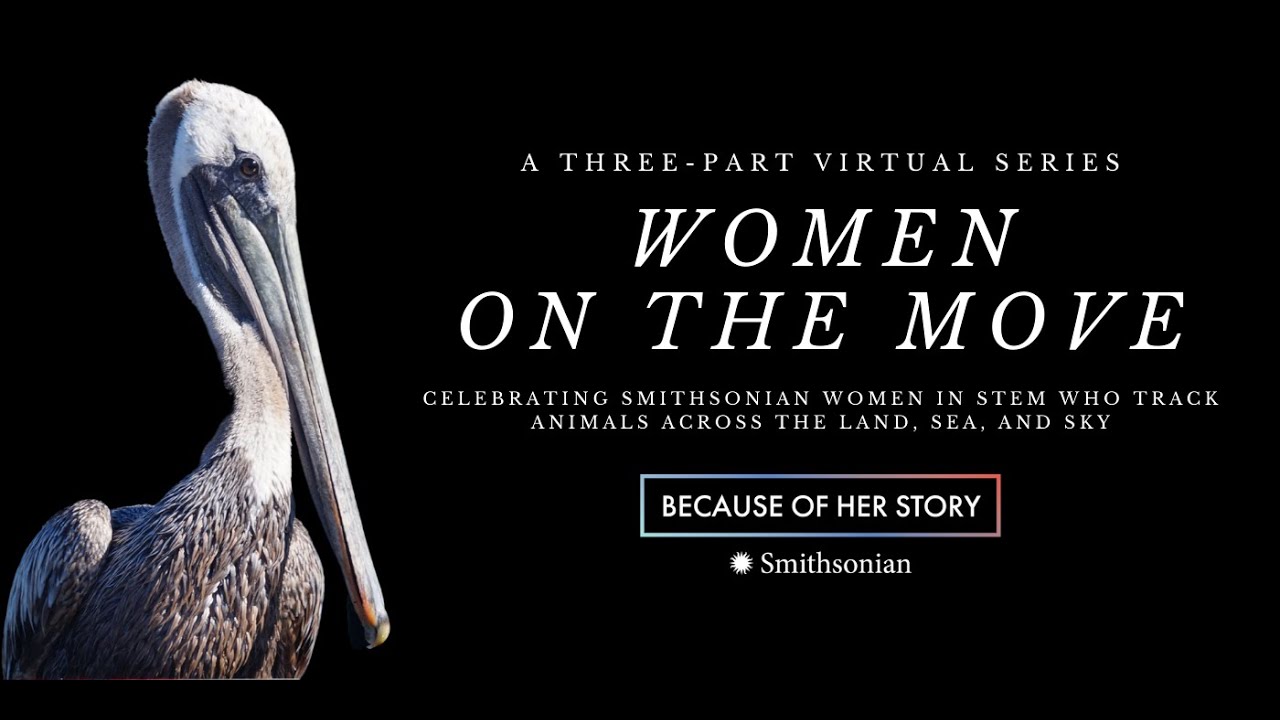*****
Summary of Transcript:
The video introduces a series of webinars celebrating Earth Day, featuring Smithsonian women in science, technology, engineering, math, and arts (STEM/STEAM) who track animals in different ecosystems. The guest scientist, Dr. Autumn-Lynn Harrison, is a research ecologist at the Migratory Bird Center. She specializes in seabirds and shorebirds that she tracks with secret agent tools like monitoring devices. She explains that migratory birds connect different countries as they travel to find suitable habitats for nesting and feeding. Tracking tags attached to other birds record their migration routes as shown on a map with other colored tracks.
*****
Summary of Description:
“Women on the Move: Technology and Animal Tracking” is an online series aimed at grades 3-8, showcasing stories of women in STEM who track animals across different ecosystems. The latest installment, Part II, highlights the work of scientist Autumn-Lynn Harrison, who studies migratory birds at the Smithsonian’s National Zoo and Conservation Biology Institute. The project received support from the Smithsonian American Women’s History Initiative. #BecauseofHerStory #EarthOptimism #WomenTrackingWildlife
*****
Women on the Move: Technology and Animal Tracking
Animal tracking has been an essential tool for scientists and researchers to gather information about animal behavior, movement patterns, and migration routes. In recent years, technology has significantly advanced animal tracking methods, making them more accurate and efficient. Women, in particular, are leading the way in this field.
The “Women on the Move: Technology and Animal Tracking” series is a virtual program that showcases the stories of women in STEM who track animals across the sea, sky, and land ecosystems. The program, designed for grades 3-8, aims to inspire young minds to pursue a career in science and technology.
Meet Autumn-Lynn Harrison, Ph.D.
Part II of the series features Autumn-Lynn Harrison, Ph.D., a scientist at the Smithsonian’s National Zoo and Conservation Biology Institute. Dr. Harrison is an expert in studying migratory birds and uses technology to track their movements.
Dr. Harrison’s work involves studying the migration patterns of birds and understanding the factors that affect their behavior. By checking the birds’ migration patterns, scientists can learn about their breeding, feeding, and wintering habits, which can help develop conservation strategies to protect their habitats.
Using Technology to Track Birds
Dr. Harrison uses several tracking technologies to study migratory birds. One of the methods she uses is GPS tracking, which allows her to track the birds’ movements accurately. GPS tracking involves attaching a small device, called a tag, to the bird’s body, which sends signals to satellites. The signs are then sent to the scientists, who can track the bird’s location.
Another technology is called geolocators. Geolocators are small, lightweight devices that can be attached to a bird’s leg. The device measures the amount of sunlight the bird is exposed to, which helps scientists estimate the bird’s location.
Impact of Women on Science
Dr. Harrison’s work demonstrates women’s vital role in animal tracking and conservation. Women have made significant contributions to the field of science, yet their work often goes unnoticed. The Smithsonian American Women’s History Initiative supports and recognizes women’s position in science, highlighting their contributions to society.
Furthermore, the “Women on the Move: Technology and Animal Tracking” program aims to inspire young girls to pursue careers in science, technology, engineering, and math (STEM). By showcasing the stories of women scientists, the program encourages young girls to break down gender barriers and pursue their passion for science.
Conclusion
Technology has revolutionized animal tracking methods, making it easier to study and understand the behavior of animals. Women play a significant role in this field, and Dr. Harrison’s work is a testament to that. Her use of GPS tracking and geolocators provides critical insights into the migratory patterns of birds, which can help develop conservation strategies to protect their habitats.
The “Women on the Move: Technology and Animal Tracking” program is an excellent initiative showcasing women’s stories in STEM, inspiring young girls to pursue careers in science and technology. It is essential to recognize the contributions of women in science and encourage young girls to pursue their careers in STEM. #BecauseofHerStory #EarthOptimism #WomenTrackingWildlife
*****
Source Description
“Women on the Move: Technology and Animal Tracking” is a virtual series for grades 3-8 that highlights the stories of women in STEM who track animals across sea, sky, and land ecosystems.
In Part II, meet Autumn-Lynn Harrison, Ph.D., a scientist at the Smithsonian’s National Zoo and Conservation Biology Institute who studies migratory birds! Original Air Date: April 20.
Learn more: https://nationalzoo.si.edu/education/…
This project received support from the Smithsonian American Women’s History Initiative. #BecauseofHerStory #EarthOptimism #WomenTrackingWildlife

